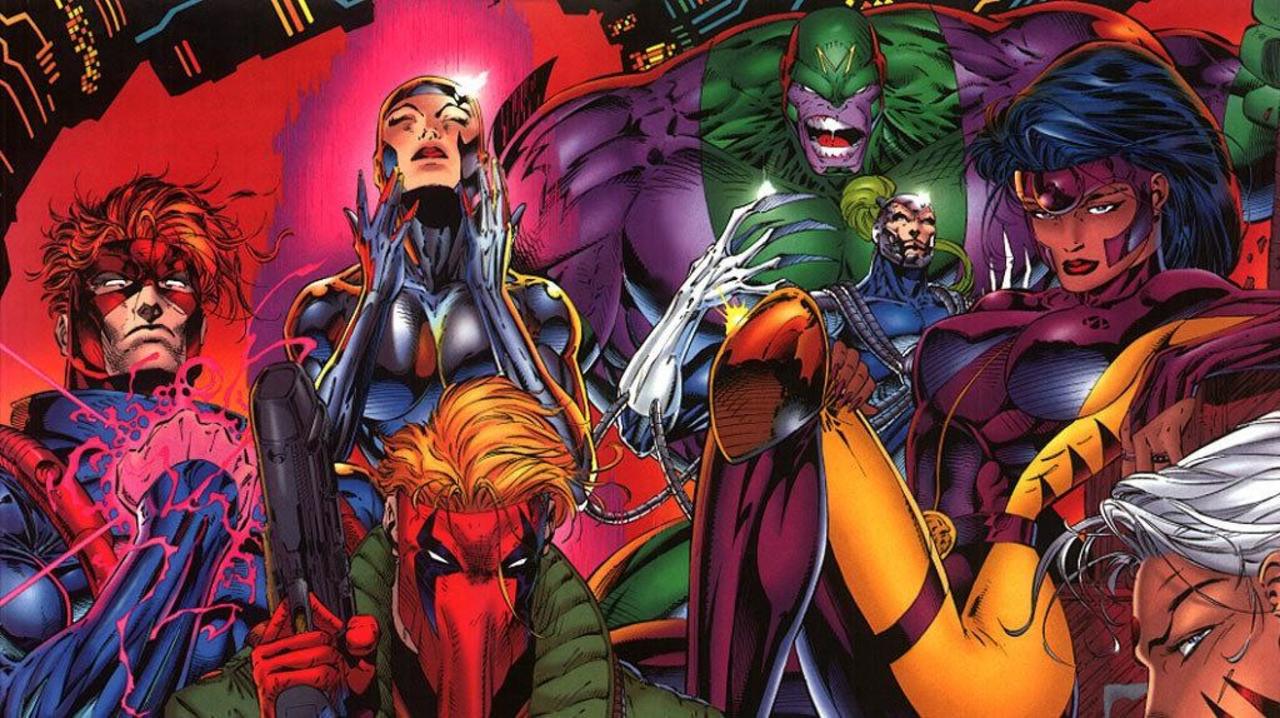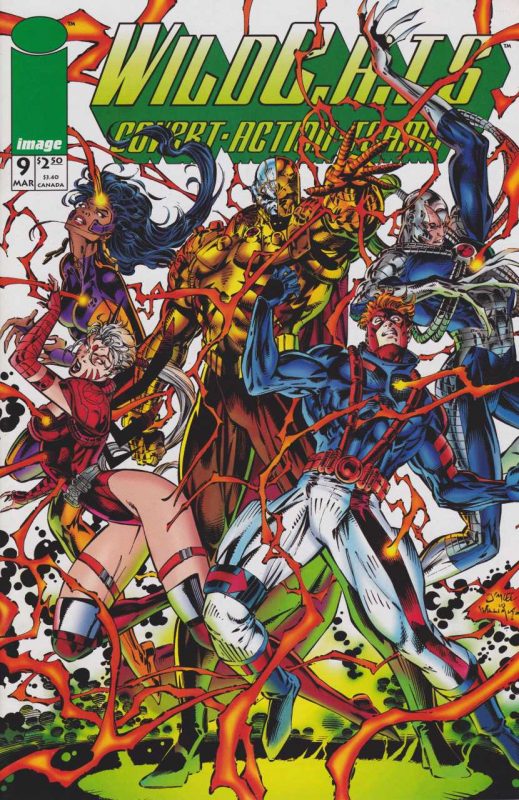Somehow, despite thoroughly being a child of the 90s, I had never read WildCATS. I was always aware of it; my friend Justin had a stack of those early issues, and I imagine I probably flipped through them while we played Sega games, but I didn’t really read them. It’s sort of strange looking back, as twelve-year-old me was absolutely a mark for the Jim Lee style of comics. Even now I can still appreciate the bombast of his work: he was widescreen before it was cool, hell, he made it cool. I don’t know if it was the same for any of you, but there was a hierarchy to those ex-Marvel artists where I grew up; we all agreed they were cool, but each had a ranking, and Lee was, unquestionably, at the top. He was the most polished, the most able to tell a story with his art; his work had the slick feel of a big budget action movie.

It’s strange, in fact, that when we were handing out 90s Image assignments at WWAC, that WildCATS wasn’t even my first pick. I’d chosen Cyberforce, because I wanted to explore Silvestri’s moodiness, but someone else already had those issues, so in the interest of keeping things moving, I thought I’d choose the next closest thing—this being the Year of Knockoffs here at WWAC, the “next closest thing” seemed itself to be a recommendation.
In reading it, that’s kind of the hallmark of WildCATS, isn’t it? It’s a little bit like a lot of things. It’s in the characters, in the story, in the way the action is laid out, even in the people involved. I sort of like that about it; it wears its influences on its sleeve. Lee is a lot of things as an artist, but he’s not subtle. WildCATS is a little bit X-Men: Spartan is Cyclops, but uses his hands instead of his eyes. It’s a little bit Watchmen: I always thought Grifter was a Gambit pastiche, but in reading, he’s a nineties Rorschach, and Void is detached from the linear perspective of the story—a gender-swapped Doctor Manhattan. It has the “rich civilian financial backing” that Maxwell Lord gave the Justice League in the eighties in Jacob Marlowe. Voodoo has shades of Vixen, but enters the story like Sin City’s famous dame Nancy Callahan while Grifter sits astride a bar stool in civilian guise, doing his best Marv.
As a side effect, what WildCATS isn’t is cohesive. It cribs styles from those other books as well; like Savage Dragon, it’s Watchmen with an X-Men action budget, Sin City without the room to feel the hurt. Lee (and his cohort Brandon Choi) don’t spend the required time introducing us to these characters properly; we know their names and their powers, but perhaps because they feel like those old friends of ours from other books, they’re treated with a familiarity they haven’t earned. I care about Cyclops and his brokenness, his neuroatypical approach to being a child soldier all grown up. I don’t care about the heavily augmented Spartan and his detachable limbs. I care about Rorschach; I don’t like him much, but I understand his uncompromising ideals, his desire to scream into the void. Grifter’s just a guy with guns. Maul gets dumber as he gets bigger, okay, but I’ve already read The Incredible Hulk.
It really shows that, as much as Lee thought he was ready when he and the rest of his contemporaries walked out of Marvel, as much as that was the right thing to do at the time, he wasn’t as ready as he thought he was. For all that he’d worked with great writers, he hadn’t really learned the lessons they had to impart regarding pacing and character growth. He was impatient, youthful still, and it shows in the shortcuts to he took to personalities and conflicts. Everything in the story is partially realized; from the characters listed above, to the plot itself. The Daemonites of the story are a race of invading aliens who’ve been on Earth in secret for years; if this is in advance of Marvel’s Secret Invasion, well, remember that it comes only a few years after Manhunters were impersonating DC superheroes in the Millenium event. Opposing the Daemonites are the Kherubim; both names that have biblical allegories; the oldest tale of good versus evil western culture has. In perhaps the strangest bit of influence, the very beginning of the story introduces us to Jacob Marlowe (only a shade away from Jacob Marley) through the windows of past, present and future; we’re only a few ghosts and a rich Scrooge away from Dickens.
That’s not to say that any of these things are bad; comics are, by both tradition and choice, an inherently self-referential medium. Each generation grows up reading them, and each generation reinterprets what they read in new ways. It’s as prevalent here as it is in the arts elsewhere, I think, though it might seem a little more overt. I enjoy that sort of harmless narcissism on the part of the medium; comics are works of love that are in turn in love with themselves, and as I’ve said, I’m a romantic.
It’s just that in the case of WildCATS, it’s all so busy. The first arc is four issues, and it tries so hard to cram in everything that it can, tries so hard to be everything to everyone that I just end up feeling exhausted. It reminds me of yet another property in that regard; I fell asleep during my first viewing of The Lego Batman Movie after an extended opening action sequence wore me out without first giving me a chance to care. Now, as then, I feel like I need a nap.




4